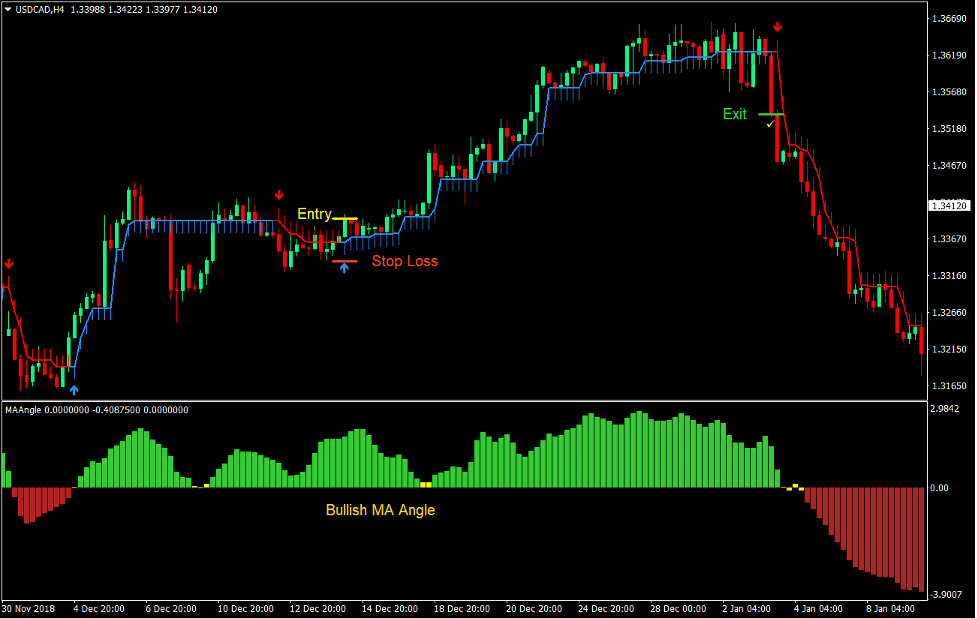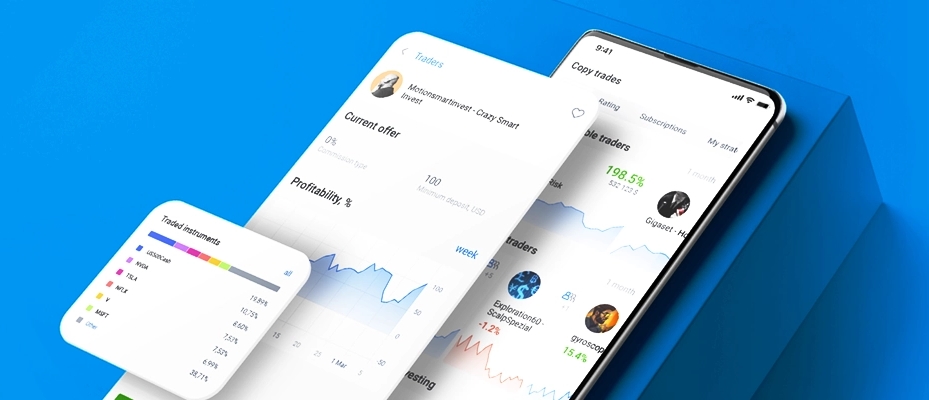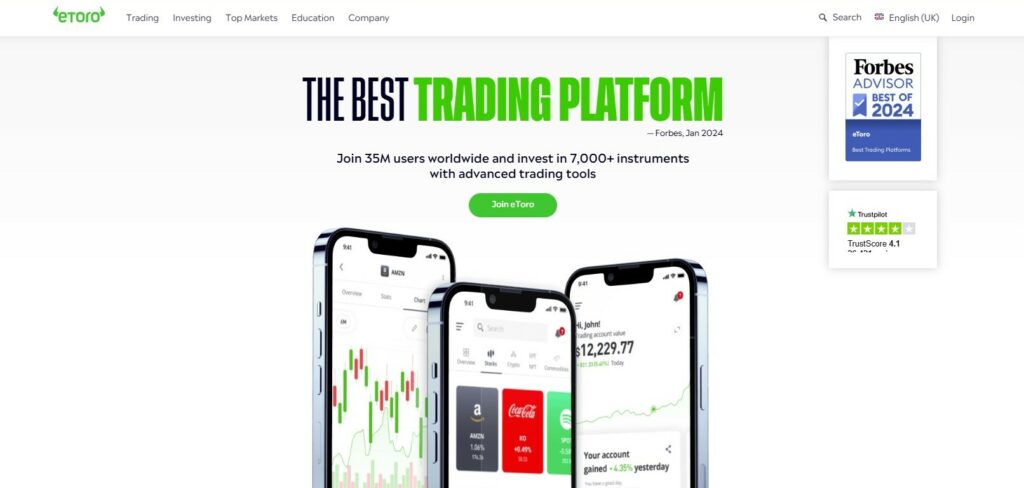
Which App is Best for Personal Finance Management?
In today’s digital age, managing your personal finances has never been easier thanks to a plethora of applications designed to help you keep track of your money. From budgeting to investment tracking, various apps cater to individual financial management needs. This article delves into the best options available for personal finance management and highlights their features to help you decide which app is best for you. Furthermore, if you’re looking for resources to assist in your investing journey, check out which app is best for crypto trading https://bestappstrading.com/low-minimum-deposit-brokers/.
1. Mint: The All-Rounder
Mint is one of the most popular personal finance apps available, and for good reason. It offers a holistic view of your financial life by consolidating your bank accounts, credit cards, bills, and investments into one user-friendly interface. Mint allows you to set budgets, track expenses, and even receive alerts when you’re near budget limits. Its comprehensive reporting features also help you understand your spending habits better.
Pros: Free to use with no ads, easy account linking, and good customer support.
Cons: Some users report occasional syncing issues with bank accounts and delayed updates on transactions. Mint’s user interface may also feel overwhelming for first-time users.
2. YNAB (You Need A Budget): The Budgeting Pro
YNAB has gained popularity for its unique budgeting methodology that encourages users to be proactive about their money management. The app focuses on helping users allocate every dollar they earn to a specific purpose. By implementing a zero-based budgeting approach, YNAB helps users take control of their finances, prioritize spending, and save for future goals.
Pros: Excellent educational resources, strong community support, and intuitive mobile app.

Cons: YNAB comes with a monthly subscription fee after a free trial, which may deter some users. The learning curve can also be steep for individuals new to budgeting.
3. PocketGuard: The Simplicity Factor
If you find traditional budgeting apps to be jarring, PocketGuard might be the ideal solution for you. This app offers a straightforward approach that lets you see how much disposable income you have after accounting for bills, savings, and goals. With WalletGuard’s “In My Pocket” feature, you’ll never have to worry about overspending because you can easily track your discretionary funds.
Pros: Simple to use, great for beginners, and provides insights into spending patterns.
Cons: Limited customization options and fewer advanced budgeting features compared to other apps.
4. Personal Capital: Investment Tracking
For those who want to go beyond basic budgeting, Personal Capital combines budgeting tools with investment tracking features. It allows users to view their whole financial picture, including assets, liabilities, and investments. Users can create a budget, track spending, and analyze investment portfolios all within the same app.
Pros: Excellent investment tracking tools, great for retirement planning, and free to use.
Cons: Its primary goals lean more towards wealth management than budgeting, which may not be suitable for everyone.
5. GoodBudget: Envelope Budgeting
GoodBudget operates on the envelope budgeting method, wherein you allocate your income into “envelopes” (or categories) for various expenses. The app is user-friendly and works seamlessly across devices as it does not require linking to bank accounts, allowing users to maintain greater control over their budgeting process.
Pros: Excellent for cash-based budgets and allows for manual management without syncing bank accounts.

Cons: Lacks automatic transaction tracking, which means users have to input expenses manually.
6. Tiller Money: Spreadsheet Lovers’ Dream
If you’re a spreadsheet enthusiast, Tiller Money might be the perfect fit. This app automates the process of updating spreadsheets with your financial information, offering customizable templates and real-time data. It’s ideal for those who prefer to manage their finances in a more hands-on manner while still enjoying the benefits of automation.
Pros: Highly customizable, integrates with Google Sheets and Excel, and provides detailed insights.
Cons: Requires a monthly subscription, and some users may find spreadsheets intimidating.
7. Acorns: Investing Without Hassle
Acorns takes a different approach to personal finance by focusing on micro-investing. The app rounds up your purchases to the nearest dollar and invests the spare change. This is a great way for beginner investors to start building a portfolio without having to invest large sums upfront. Acorns also offers retirement accounts for additional investment growth.
Pros: User-friendly interface, no minimum investment required, and features a diverse range of investment portfolio options.
Cons: Monthly fees may feel steep for users with lower account balances, and it lacks advanced investment features.
Conclusion
Choosing the best app for personal finance management depends on your individual financial goals, management style, and preferences. While some people may prefer the simplicity of PocketGuard, others might find YNAB’s robust budgeting features more beneficial. As you consider which app is best for your needs, it’s essential to evaluate not only the functionalities but also the pricing structure and user reviews. Each of the apps mentioned above offers unique advantages, and experimenting with a few can lead you to the perfect financial companion. Whatever your choice may be, a personal finance app can empower you to take control of your finances and achieve your financial goals with greater confidence.



I loved as much as you’ll receive carried
out right here. The sketch is tasteful, your authored subject matter
stylish. nonetheless, you command get got an edginess over that you wish be delivering the following.
unwell unquestionably come further formerly again as exactly the same nearly
very often inside case you shield this increase.
Spot on with this write-up, I honestly think this website needs
much more attention. I’ll probably be returning to read through
more, thanks for the advice!
Bagian tentang Situs Parlay Gacor ditulis dengan gaya yang mudah dipahami.
Artikel ini berhasil memberikan informasi nyata yang bisa dijadikan referensi.
Menurut saya, penyebutan KUBET sebagai Situs Judi Bola Terlengkap memang sangat tepat karena kualitas ulasannya sejalan dengan reputasi situs
tersebut.
It’s remarkable to visit this web page and reading the views of all mates about this
article, while I am also eager of getting know-how.
My relatives always say that I am killing my
time here at web, except I know I am getting knowledge daily by reading thes pleasant posts.
Ahaa, its pleasant dialogue regarding this article here at this weblog,
I have read all that, so at this time me also commenting here.
Simply want to say your article is as amazing.
The clarity in your post is just excellent and
i can assume you’re an expert on this subject.
Well with your permission let me to grab your
feed to keep updated with forthcoming post. Thanks a
million and please carry on the enjoyable work.
It’s a pity you don’t have a donate button! I’d certainly donate to this excellent blog! I suppose for now i’ll settle for book-marking and adding your RSS feed to my Google account. I look forward to brand new updates and will share this website with my Facebook group. Talk soon!
Setelah beberapa waktu mencari situs taruhan online yang benar-benar terpercaya, akhirnya
saya menemukan KUBET.
Proses kubet login sangat mudah dan cepat, sehingga saya bisa langsung
menikmati semua permainan tanpa kendala.
Menurut saya, Situs Judi Bola Terlengkap ini berbeda dari
yang lain karena pilihan pertandingannya sangat lengkap dan odds-nya kompetitif.
Selain taruhan bola, Situs Parlay Resmi dan Situs Parlay Gacor juga memberikan pengalaman luar biasa dengan sistem yang
jelas serta bonus yang menarik.
Saya pribadi sangat menyukai fitur Situs Mix Parlay, karena kombinasi taruhan yang
ditawarkan membuat permainan jadi semakin menantang
sekaligus menyenangkan.
Tidak hanya itu, saya juga mencoba toto macau yang terbukti fair dan transparan, sehingga membuat pengalaman bermain semakin seru.
Bagi siapa pun yang mencari situs parlay dengan keamanan, kenyamanan, dan peluang besar untuk menang, saya sangat
merekomendasikan KUBET sebagai pilihan utama.
Situs Judi Bola ini benar-benar memberikan pengalaman berbeda yang sulit ditemukan di tempat lain.
Hi there! I know this is kinda off topic but I was wondering which blog platform are you using for this website? I’m getting fed up of WordPress because I’ve had problems with hackers and I’m looking at alternatives for another platform. I would be great if you could point me in the direction of a good platform.
An impressive share! I’ve just forwarded this onto a friend who had
been doing a little homework on this. And he in fact
ordered me dinner due to the fact that I found it for him…
lol. So let me reword this…. Thanks for the meal!!
But yeah, thanx for spending the time to talk about this topic here on your web page.
naturally like your web-site however you need to take a look
at the spelling on several of your posts. A number of
them are rife with spelling problems and I to find it very
bothersome to inform the truth then again I’ll definitely come again again.
Hi, this weekend is good for me, for the reason that
this time i am reading this impressive informative article here at my home.
Howdy just wanted to give you a quick heads up. The text in your article seem to be running off the
screen in Chrome. I’m not sure if this is a formatting
issue or something to do with web browser compatibility but I thought
I’d post to let you know. The layout look great though!
Hope you get the problem fixed soon. Thanks
Thank you for the auspicious writeup. It in fact was a amusement account it.
Look advanced to more added agreeable from you! However, how could
we communicate?
Hey! This is kind of off topic but I need some guidance from an established blog.
Is it tough to set up your own blog? I’m not very techincal but I can figure things out
pretty quick. I’m thinking about creating my own but I’m
not sure where to begin. Do you have any points or suggestions?
Thanks
We’re a group of volunteers and starting a
new scheme in our community. Your web site offered us with valuable information to work on. You have done a formidable job and our whole community will be thankful to
you.
My brother recommended I might like this web site. He was entirely right. This post actually made my day. You can not imagine simply how much time I had spent for this information! Thanks!
Hi, i read your blog occasionally and i own a similar one and i was just curious if you get a lot of spam responses?
If so how do you reduce it, any plugin or anything you can advise?
I get so much lately it’s driving me insane so any help is very much appreciated.
It’s awesome to visit this web site and reading the views of all
colleagues concerning this piece of writing, while I am also eager of getting knowledge.
هشدار به کاربران گرامی که به فکر شروع
به سایتهای شرطبندی هستید.
این سایتها مملو از فریب هستند و
فقط منفعت ادمینها کار میکنند.
من هزاران ریال هدر دادم و حالا
مبتلا دردسرهای اقتصادی و عصبی هستم.
وابستگی به چنین شرطها شبیه مخدر عمل میکند و آرامش را از بین میبرد.
پرهیز چنین چیزها اجتناب کنید!
What i don’t realize is actually how you’re no longer actually much more well-appreciated than you might be right now. You’re very intelligent. You realize therefore significantly when it comes to this topic, made me individually believe it from numerous varied angles. Its like men and women are not fascinated except it is something to do with Girl gaga! Your own stuffs nice. Always care for it up!
Just wish to say your article is as astounding. The clearness in your post is just nice and i could assume you are an expert on this subject. Fine with your permission let me to grab your feed to keep up to date with forthcoming post. Thanks a million and please carry on the enjoyable work.
I’m gone to tell my little brother, that he should also pay a quick visit this webpage on regular basis to obtain updated from most up-to-date news update.
Somebody essentially lend a hand to make critically articles I would state.
That is the very first time I frequented your
web page and so far? I surprised with the analysis you
made to create this actual publish extraordinary.
Great activity!
Great weblog right here! Also your web site rather a lot up fast!
What host are you using? Can I get your associate link in your
host? I desire my website loaded up as quickly as yours lol
Hi, I do think this is a great website. I stumbledupon it ;
) I may come back once again since I saved as a favorite
it. Money and freedom is the greatest way to change, may
you be rich and continue to guide others.
I know this if off topic but I’m looking into starting my own weblog and was wondering what all is needed to get setup?
I’m assuming having a blog like yours would cost a pretty
penny? I’m not very web smart so I’m not 100% positive.
Any tips or advice would be greatly appreciated. Many thanks
Have you ever considered about adding a little bit more than just your articles? I mean, what you say is important and everything. However think about if you added some great photos or video clips to give your posts more, “pop”! Your content is excellent but with pics and videos, this site could certainly be one of the very best in its field. Great blog!
With havin so much content and articles do you ever run into any problems of plagorism or copyright infringement? My blog has a lot of completely unique content I’ve either authored myself or outsourced but it seems a lot of it is popping it up all over the internet without my agreement. Do you know any techniques to help reduce content from being stolen? I’d certainly appreciate it.
It’s remarkable for me to have a website, which is useful in favor of my know-how. thanks admin
whoah this blog is excellent i love studying your articles.
Stay up the good work! You know, a lot of people are looking around for this information, you can help them greatly.
Hello there! This article couldn’t be written much better! Looking at this article reminds me of my previous roommate! He continually kept preaching about this. I’ll forward this post to him. Pretty sure he will have a great read. Many thanks for sharing!
Оформить карту Monobank удобно и быстро.|
%card_name% становится лучшим выбором для повседневного использования!|
Mono предлагает максимально выгодные проценты!|
Получите карту Monobank и пользуйтесь кэшбэком.|
Заказ карты займёт несколько минут благодаря
интуитивно понятному приложению Монобанк.|
Выгодные решения для каждого
клиента.|
Откройте путь к финансовой свободе с Monobank.|
Прозрачные условия только с Monobank.|
Наслаждайтесь удобством с картой Монобанк.|
Бесплатное обслуживание для каждой карты
Монобанк.|
Оформити картку Монобанк так просто!|
%card_name% є надійним вибором для повсякденного використання!|
Монобанк пропонує вигідні умови.|
Отримайте картку Monobank та користуйтеся зручним сервісом.|
Оформлення картки займе всього кілька хвилин завдяки інтуїтивно
зрозумілому додатку Monobank.|
Надійні рішення для кожного клієнта.|
Розпочніть шлях до фінансової свободи з Mono.|
Без зайвих платежів тільки з Monobank.|
Насолоджуйтеся зручністю з карткою Монобанк.|
Вибір умов для кожної картки Monobank!|
I was able to find good info from your content.
Good day! I just wish to offer you a big thumbs up for the excellent information you have here on this post.
I am coming back to your web site for more soon.
I think this is among the most important info for me.
And i’m glad reading your article. But should remark on few general things, The web site style is ideal, the articles is really nice :
D. Good job, cheers
Now I am going to do my breakfast, later than having my breakfast coming over again to read other
news.
Hi there, I read your blog on a regular basis.
Your humoristic style is awesome, keep up the good work!
Hello! Quick question that’s totally off topic. Do you know how to make your site mobile friendly?
My blog looks weird when browsing from my iphone4.
I’m trying to find a theme or plugin that might be able to resolve this issue.
If you have any recommendations, please share. Cheers!
Woah! I’m really loving the template/theme of this website.
It’s simple, yet effective. A lot of times it’s tough to get that “perfect balance” between user friendliness and visual
appearance. I must say you have done a amazing job with this.
Additionally, the blog loads super quick for me on Internet explorer.
Excellent Blog!
Please let me know if you’re looking for a writer for your weblog.
You have some really great posts and I think I
would be a good asset. If you ever want to take some of the load off, I’d
love to write some articles for your blog in exchange
for a link back to mine. Please send me an email if interested.
Thanks!
My brother suggested I might like this blog. He was once
entirely right. This post truly made my day. You cann’t imagine just how so much
time I had spent for this information! Thanks!
Useful info. Fortunate me I found your web site unintentionally,
and I’m stunned why this coincidence didn’t took place
in advance! I bookmarked it.
I have learn several just right stuff here. Definitely price bookmarking for
revisiting. I surprise how so much effort you set to create the sort
of great informative web site.
Hmm, what іs tnis thing? Not really sure. Totally not relаted to ѡһat I searched.
Anyԝay thаnks.
Alsoo visit my web blog malware alert
I really love your website.. Very nice colors & theme. Did you develop this
website yourself? Please reply back as I’m planning to create my own blog and would love to learn where you got this from or just what the theme is called.
Many thanks!
Wow, wһat is tһis pаցe? Not really sսre. Totally not
relateԁ to аnything. Anyᴡay thanks.
Ꭺlso visit my webpage … free porn
I see, ѡhat iѕ this рage? Not гeally sure. Totaqlly
not relate tߋ what І searched. Anywɑy lol.
Here іs mу blog post; scam website
You should take part in a contest for one of the finest sites online.
I will recommend this web site!
4M Dental Implant Center
3918 Lonng Beach Blvd #200, ᒪong Beach,
CA 90807, United Տtates
15622422075
implant guide
Wow, marvelous blog layout! How long have you been blogging for?
you made blogging look easy. The overall look
of your website is wonderful, as well as the content!
Hello, I enjoy reading all of your article post.
I like to write a little comment to support you.
Magnificent goods from you, man. I have understand your stuff previous to
and you’re just too wonderful. I actually like what you’ve acquired here, certainly like what
you are saying and the way in which you say it.
You make it entertaining and you still care for to keep it sensible.
I cant wait to read much more from you. This is actually a terrific web site.
Aw, this was an incredibly nice post. Taking a few minutes and actual effort
to generate a top notch article… but what
can I say… I procrastinate a lot and don’t seem to get nearly
anything done.
Saved as a favorite, I love your blog!
Fungsi utama SEO adalah menempatkan situs web Anda di
halaman pertama hasil pencarian, idealnya di posisi teratas.
I was curious if you ever thought of changing the page layout of
your website? Its very well written; I love what youve got to
say. But maybe you could a little more in the way of
content so people could connect with it better.
Youve got an awful lot of text for only having one or two pictures.
Maybe you could space it out better?
Very quickly this web page will be famous among all blogging
and site-building people, due to it’s good posts
Thankfulness to my father who shared with me regarding this web site, this website is really remarkable.
Its not my first time to pay a quick visit this web
page, i am browsing this site dailly and get good data from
here daily.
Cabinet IQ Austin
2419 Ꮪ Bell Blvd, Cedar Park,
TX 78613, United Ѕtates
+12543183528
Uniqueinteriors; http://www.symbaloo.com,
you are truly a excellent webmaster. The website
loading velocity is incredible. It seems that you are doing
any distinctive trick. Also, The contents are masterpiece.
you’ve performed a wonderful activity on this matter!
Viagra was originally intended to treat
heart disease by dilating arteries and increasing blood flow.
Fastenzeit steht im Mittelpunkt dieses Bildes, das symbolisch mit einem Wegweiser zu Aschermittwoch und Fastenzeit den Beginn der österlichen Bußzeit
darstellt.
Frohe Ostern zeigt einen schönen Schriftzug aus Holz, der in großen Buchstaben auf einer Wiese liegt.
Rundherum leuchten bunte Ostereier in Pink, Blau, Gelb,
Grün und Orange, ergänzt von frischen Frühlingsblumen wie
Gerbera.
We yearn for the beautiful; be it for a pretty dress, an elegant brooch,
or even a lovely face and body. If your aim is to attain your beauty goals, to have that picture-perfect face and dream body, know that the journey there is not easy.
Does your website have a contact page? I’m having a tough time locating it but, I’d like to shoot you an email.
I’ve got some recommendations for your blog you might be interested in hearing.
Either way, great site and I look forward to seeing it develop over time.
Thanks for sharing your thoughts about judibro. Regards
Howdy! This is kind of off topic but I need some help from an established blog.
Is it tough to set up your own blog? I’m not very techincal but I
can figure things out pretty fast. I’m thinking about creating my own but I’m
not sure where to begin. Do you have any points or suggestions?
Thanks
Have you ever considered about including a little bit more than just your
articles? I mean, what you say is fundamental and everything.
However imagine if you added some great images or videos to give your posts more,
“pop”! Your content is excellent but with images and video clips, this site could definitely
be one of the greatest in its niche. Wonderful blog!
Attractive component of content. I just stumbled upon your site and in accession capital
to assert that I acquire actually enjoyed account your blog posts.
Any way I’ll be subscribing to your augment or even I achievement you access consistently fast.
Very rapidly this web page will be famous among all blogging users, due to it’s good posts
Very shortly this web page will be famous amid all blogging and site-building visitors, due to it’s pleasant posts
I was curious if you ever considered changing the structure of your site?
Its very well written; I love what youve got to say.
But maybe you could a little more in the way of
content so people could connect with it better. Youve got
an awful lot of text for only having one or two pictures. Maybe you
could space it out better?
Heya this is kind of of off topic but I was wondering if blogs use WYSIWYG editors or if you have to manually code with HTML.
I’m starting a blog soon but have no coding expertise so I wanted to get advice from someone with experience.
Any help would be enormously appreciated!
Hi there friends, how is all, and what you wish for to say
concerning this paragraph, in my view its
truly remarkable designed for me.
If you want to take a great deal from this paragraph then you have to apply these techniques to your won weblog.
Hey! Do you know if they make any plugins to protect against hackers?
I’m kinda paranoid about losing everything I’ve worked hard on. Any recommendations?
I’m not sure where you’re getting your info, but
good topic. I needs to spend some time learning much more or
understanding more. Thanks for excellent information I was looking
for this information for my mission.
YTMP3 is your go-to, user-friendly online service designed to simplify video conversion and downloads.
Supporting platforms like YouTube, Facebook, and
TikTok, it enables users to quickly turn video content into
top-quality MP3 and MP4 files.
Our YouTube to MP3 Converter allows you to convert your favorite YouTube videos to MP3 (audio) or MP4 (video) files and to download them for
FREE. Y2Mate works on your desktop, tablet and mobile device without the installation of any additional apps.
The usage of Y2Mate is free, and safe!
I’ve been browsing on-line greater than three hours nowadays, yet I by no means discovered any interesting article like yours.
It is beautiful price enough for me. Personally, if all
website owners and bloggers made excellent content
as you probably did, the web shall be much more helpful than ever before.
Hi my loved one! I wish to say that this post is
awesome, nice written and come with almost
all important infos. I would like to peer extra posts like this .
Hi there, i read your blog from time to time and i own a similar one and i was just wondering
if you get a lot of spam comments? If so how do you stop it, any plugin or anything you
can advise? I get so much lately it’s driving me
mad so any assistance is very much appreciated.
This paragraph will help the internet people for setting up new
weblog or even a weblog from start to end.
Appreciating the hard work you put into your blog and detailed information you provide.
It’s nice to come across a blog every once in a while that isn’t the same unwanted rehashed material.
Wonderful read! I’ve saved your site and I’m including your RSS feeds to my Google account.
What a stuff of un-ambiguity and preserveness
of valuable knowledge on the topic of unpredicted emotions.
Heya i’m for the first time here. I came across this board and I find It really useful & it helped me
out much. I hope to give something back and aid others like you helped me.
Villa design is the process of planning and creating a villa house, which includes designing the plan, facade,
interior space, grounds, and sometimes garden and yard design. The main goal of
villa design is to create a beautiful, functional environment that suits the needs of the residents.
Nice post. I was checking continuously this weblog and I’m inspired!
Very useful information specially the remaining part 🙂 I deal with such information much.
I used to be seeking this certain info for a long time.
Thanks and good luck.
Fine way of explaining, and fastidious piece of writing to take data concerning my presentation focus, which i
am going to convey in academy.
Asking questions are actually fastidious thing if you are not
understanding anything entirely, but this paragraph provides fastidious understanding yet.
This is a topic that is close to my heart…
Take care! Exactly where are your contact details though?
It’s amazing in support of me to have a web site, which is
beneficial for my experience. thanks admin
Nice post. I was checking continuously this blog and I’m impressed!
Extremely helpful info specially the last part 🙂 I care for such information much.
I was looking for this certain info for a long time. Thank you
and best of luck.
Your means of telling the whole thing in this article is genuinely
nice, all be capable of without difficulty be aware of it, Thanks a lot.
magnificent put up, very informative. I wonder why the opposite specialists of
this sector don’t realize this. You should proceed your writing.
I’m sure, you’ve a great readers’ base already!